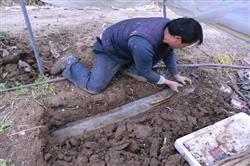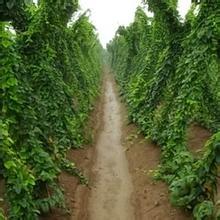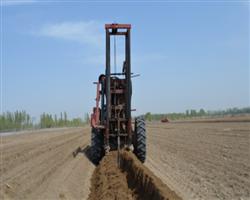Key techniques of Chinese Yam cultivation

Doing a good job of several main links in production management will greatly improve the planting efficiency of yam. In the cultivation and management of yam, we should focus on the application of base fertilizer, the looseness of soil, the treatment of yam species, timely topdressing, disease prevention and control, and take measures to promote the growth of rhizome as far as possible. First, the soil is loose and the tuber is easy to expand. The looseness of soil is very important for the elongation and expansion of rhizomes. The planting ditch should be about 1 meter deep, the sandy loam is loose and breathable, the temperature is raised quickly, and the early seedling is good, which is conducive to tuber elongation; the clayey soil is cold and hard, and the air permeability is poor, which is not conducive to root elongation, but the fertility is good. No matter what kind of soil, it can be mixed with cow and horse dung or crushed crop straw (wheat straw, rice husk can also) more than 1000 kg per mu, which not only increases soil organic matter, but also improves soil permeability. Large stones, tiles and gravel in the soil should be removed so as not to cause damage to the roots. It is better to dig trenches in advance before freezing, which is conducive to weathering soil and form a good soil structure. Irrigation should be carried out as soon as possible, so as to raise the ground temperature as soon as possible. Second, the base fertilizer should be fully used and the plastic film should be covered. Per mu, there are more than 3000 kg of rotten chicken and duck manure or pig and sheep manure, more than 50 kg of potassium sulfate compound fertilizer and about 50 kg of diammonium phosphate. Conditional application of biological fertilizer and bean cake fertilizer 100 kg, boron-zinc-iron micro-fertilizer each 1 kg, fully mixed with the soil and filled in the planting ditch. After being fully filled with water, the seeds can not be sown until the ground temperature rises to 15 degrees. After sowing, plastic film should be covered to increase temperature and preserve soil moisture. At the end of May, the membrane should be removed and the root of the root should be fixed. Third, the seedlings should be treated to prevent diseases and insects. Chinese yam is easy to be infected with root rot and blight after sowing. The simplest way is to treat the yam species. The yam seeds can be soaked with 1000 times of fipronil (Shile) or 1500 times of Amisi, and then sowed after spraying along the ditch to ensure that the yam does not die at the seedling stage. There are many underground pests in spring, mainly mole cricket, golden needle worm, grub and ground tiger. The more effective method is to spray phoxim 1500 times along the ditch. Or using high concentration Ruisheng (thiazide) spray ditch to control underground pests, the effect is better and the safety is higher. Fourth, protect stems and leaves in the middle stage, pay attention to three items. Chinese yam to the middle of growth, more rainy days, high humidity, easy to cause anthracnose, brown spot, nail spore leaf spot, brown rot, virus. Can be used Amicida 1500 times plus copper noble 600x spray, once every 15 days, a total of 2-3 times. Brown rot can be rooted in the above methods, especially after heavy rain. The key point of virus disease is to control whitefly and mites. Pay attention to the topdressing of chemical fertilizer, topdressing 2-3 times in the middle of growth, about 25 kg of potassium sulfate compound fertilizer per mu. Pay attention to timely removal of yam beans to reduce nutrient consumption.
- Prev

Technical specification for pollution-free fertilization of yam cultivation
As long as we pay attention to several main links in production management, the planting efficiency of Chinese yam will be greatly improved. In the cultivation and management of yam, we should focus on the application of base fertilizer, the looseness of soil, the treatment of yam species, timely topdressing, disease prevention and control, and take measures to promote the growth of rhizome as far as possible. One.
- Next

Yam Songgou machine is popular with vegetable farmers.
Why is the yam pine ditch machine welcomed by vegetable farmers? what are its advantages? First of all, the use of loose trench machine to plane the ditch can ensure that the depth of the yam ditch is the same, and save more labor and time. When using the yam pine trench machine to dig the yam ditch, as long as the loose soil sprocket is drilled into the ground, as long as the loosening depth of the sprocket is fixed, that is.
Related
- Where is it suitable to grow horseradish in China? it is expected to see the middle altitude horseradish in Alishan.
- How to prevent tomato virus disease reasonably? (Control methods included)
- Many people like to plant towel gourd on the balcony. What are the main points of this method and management?
- What crops can chili peppers be mixed with?
- Fertilization techniques and matters needing attention in Tomato
- What are the grafting techniques for peach seedlings in spring?
- Harm and control methods of root swelling disease of Chinese cabbage
- What are the pests of sweet potatoes? How to prevent and cure it?
- Symptoms, causes and Control methods of navel Rot in Tomato
- The cause of "Cucumber rotten bibcock" in Farmers' planting Cucumber and its Control Plan

